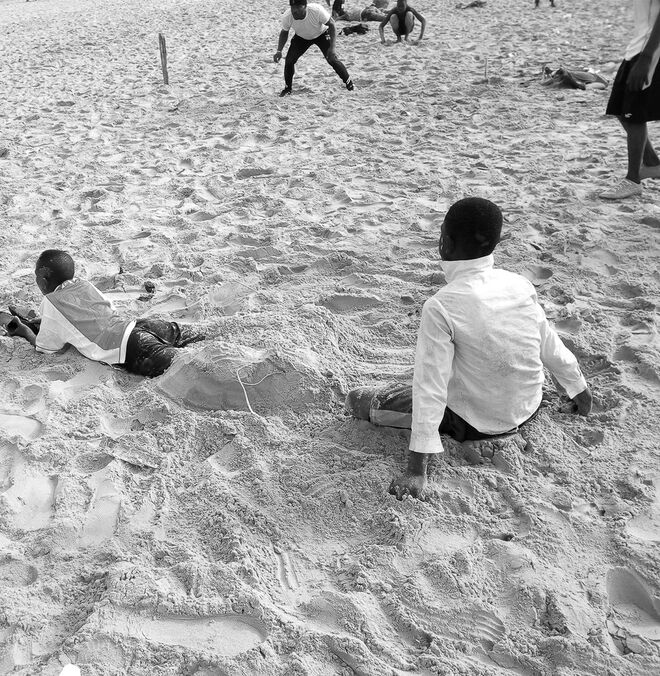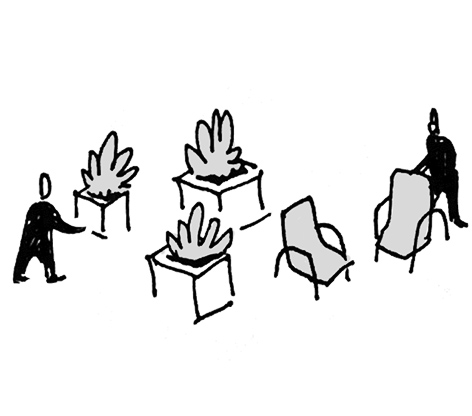12.4. Malleability
Aus Pattern Language Wiki
Make the Public Space System responsive to human need for Co-Production and adaptivity.
Problem-statement: People need environments that they can shape for themselves, as play, as art, or just to be comfortable.
Discussion: A malleable environment is one we can shape ourselves, and engage with our creativity and enjoyment. Not every environment needs to have malleability — but at least some of them do. A playground with sand… a garden with plants and dirt... a public space with Movable Seating…
In a sense, all of our human environments need some form of malleability.¹ For example, we close curtains, we open doors, we position windows for just the right amount of fresh air — not too much… We need responsive environments to meet our needs, and moreover, to meet these needs as they change over time.
Therefore:
Provide for malleability in the urban environment, in the form of materials that can be shaped, adjusted, and changed over time.
Use malleability to produce Human-Scale Detail with Complex Materials. Use malleable materials, like cardboard, foam or sandbags, to shape a Community Mockup to develop a more permanent structure later. …
¹ The idea of environmental responsiveness is discussed in Bentley, I., Alcock, A., Murrain, P., McGlynn, S., Smith, G. (1985). Responsive Environments: A manual for designers. London: Routledge.
Mehaffy, M. et al. (2020). MALLEABILITY (pattern). In A New Pattern Language for Growing Regions. The Dalles: Sustasis Press. Available at https://pattern-language.wiki/.../Malleability
SECTION I:
PATTERNS OF SCALE
1. REGIONAL PATTERNS
Define the large-scale spatial organization…
1.4. 400M THROUGH STREET NETWORK
2. URBAN PATTERNS
Establish essential urban characteristics…
3. STREET PATTERNS
Identify and allocate street types…
4. NEIGHBORHOOD PATTERNS
Define neighborhood-scale elements…
5. SPECIAL USE PATTERNS
Integrate unique urban elements with care…
6. PUBLIC SPACE PATTERNS
Establish the character of the crucial public realm…
7. BLOCK AND PLOT PATTERNS
Lay out the detailed structure of property lines…
8. STREETSCAPE PATTERNS
Configure the street as a welcoming place…
9. BUILDING PATTERNS
Lay out appropriate urban buildings…
10. BUILDING EDGE PATTERNS
Create interior and exterior connectivity…
10.1. INDOOR-OUTDOOR AMBIGUITY
SECTION II:
PATTERNS OF MULTIPLE SCALE
11. GEOMETRIC PATTERNS
Build in coherent geometries at all scales…
11.2. SMALL GROUPS OF ELEMENTS
12. AFFORDANCE PATTERNS
Build in user capacity to shape the environment…
13. RETROFIT PATTERNS
Revitalize and improve existing urban assets …
14. INFORMAL GROWTH PATTERNS
Accommodate “bottom-up” urban growth…
15. CONSTRUCTION PATTERNS
Use the building process to enrich the result…
SECTION III:
PATTERNS OF PROCESS
16. IMPLEMENTATION TOOL PATTERNS
Use tools to achieve successful results…
16.2. ENTITLEMENT STREAMLINING
16.3. NEIGHBORHOOD PLANNING CENTER
17. PROJECT ECONOMICS PATTERNS
Create flows of money that support urban quality…
17.4. ECONOMIES OF PLACE AND DIFFERENTIATION
18. PLACE GOVERNANCE PATTERNS
Processes for making and managing places…
18.3. PUBLIC-PRIVATE PLACE MANAGEMENT
19. AFFORDABILITY PATTERNS
Build in affordability for all incomes…
19.1. INTEGRATED AFFORDABILITY
20. NEW TECHNOLOGY PATTERNS
Integrate new systems without damaging old ones…
20.2. RESPONSIVE TRANSPORTATION NETWORK COMPANY


